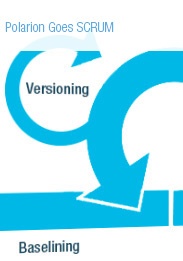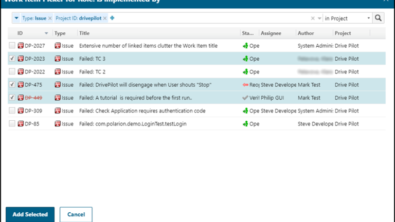Why Scrum + Polarion scares some project managers
Scrum has been embraced by industry as a way to deliver product; effectively, on time and with relevant scope (through backlog grooming). It brings order, clarity and transparency. So why is Scrum scary for some project managers?  Here at Polarion, we are using Scrum to its full potential. We are totally consumed by it, from the devs, QA’s, Product Owners and Management. What’s really great is that the product we make (Polarion ALM) helps us to see the health of a project, and any deficiencies (risks) associated with every user story, epic and feature. From a Management perspective, Polarion’s real-time delivery of product status information is the one thing that helps me as a manager to quickly and easily understand where are we with the projects. Straight to point and easy to consume, Polarion shows you “The Truth”. And if you have been using tools like Scrum and Polarion from the beginning, then as you near your release date truth shouldn’t be hard to face. As we are into final stages of our Polarion 2014 development project, every day, hour and minute counts towards delivering a top-notch product on time. We are facing complexities, problems, and challenges from day to day that have impact on the release. (Just like any other team that develops software!)
Here at Polarion, we are using Scrum to its full potential. We are totally consumed by it, from the devs, QA’s, Product Owners and Management. What’s really great is that the product we make (Polarion ALM) helps us to see the health of a project, and any deficiencies (risks) associated with every user story, epic and feature. From a Management perspective, Polarion’s real-time delivery of product status information is the one thing that helps me as a manager to quickly and easily understand where are we with the projects. Straight to point and easy to consume, Polarion shows you “The Truth”. And if you have been using tools like Scrum and Polarion from the beginning, then as you near your release date truth shouldn’t be hard to face. As we are into final stages of our Polarion 2014 development project, every day, hour and minute counts towards delivering a top-notch product on time. We are facing complexities, problems, and challenges from day to day that have impact on the release. (Just like any other team that develops software!)

Seeing the burn-up/burn-down chart showing up-to-date progress of development puts you ahead of the game. It allows management to pro-actively adjust plans, manage resourcing and realistically set expectations.
To have this kind of control over your projects, you have to start with Requirements and Planning, followed by estimations, and finally by incremental work being planned and done through sprints. All these ingredients are required to make a product that matters. Asking Why/How/What through the Scrum process insures that from day one you are building relevant features for your customers. Mapping this out from requirements down to epics and user stories gives you visible tractability of the path that you took. Management has to ensure high ROI through choices it makes, and Polarion ALM delivers that visibility. Once we have user stories broken-down to manageable pieces, we do estimations. Importance of estimations is not so much about a number that is produced by playing cards, but about the team talking about user stories, risks, and complexities… getting the team to communicate and share their opinions. Estimations are only as good as the information they are based on. Focus should not be on getting estimates out, but on getting a team to talk about product, feature and user story. This is the essence, and it is what makes the difference between a good product and a great product. Responsibility falls on entire team, from developers, Product Owner, QA, and Management. We all share risk and responsibility for the decisions we take.
We do 2-week sprints, starting with setting the scope of each sprint based on teams’ capacity and velocity. This is the easy part. Stand-up meetings is where you truly practice the Scrum process. It is time for people to collaborate again, remove impediments and ensure that everyone is on same page. Are you doing it right? It shows on burn-down chart. You can tell if you are focusing on too many items, or not closing enough of them, or if you are spending too much time on a specific item, etc. It is a management tool to quickly assess work across the team. Insuring that day to day processes are in line with what we are trying to achieve ensures that work is moving according to estimations and plans.
Having this kind of transparency, easily consumable information, and the chance to proactively adjust plans is priceless for managers. You just have to have courage to commit to Scrum, and a tool like Polarion ALM. Why do I say “courage”? Because sometimes truth can be painful!
Find out more about why and how we use Scrum at Polarion Software:
Creative Commons Photo (modified): Flickr/tropical.pete






